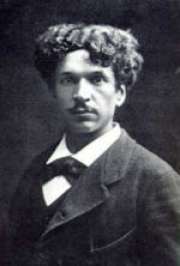Pàgina: 1
À la plus belle
:
 Poemas 2012-02-18 (6230 senalas) Poemas 2012-02-18 (6230 senalas)
À ma femme endormie
:
 Poemas 2012-02-13 (6061 senalas) Poemas 2012-02-13 (6061 senalas)
À une chatte
:
 Poemas 2010-10-20 (6823 senalas) Poemas 2010-10-20 (6823 senalas)
Ballade des souris
:
 Poemas 2010-10-20 (6196 senalas) Poemas 2010-10-20 (6196 senalas)
Ballade du dernier amour
:
 Poemas 2012-01-28 (5117 senalas) Poemas 2012-01-28 (5117 senalas)
Déserteuses
:
 Poemas 2012-02-16 (5481 senalas) Poemas 2012-02-16 (5481 senalas)
L'archet
:
 Poemas 2012-01-28 (5376 senalas) Poemas 2012-01-28 (5376 senalas)
La dame en pierre
:
 Poemas 2012-01-28 (5210 senalas) Poemas 2012-01-28 (5210 senalas)
Le hareng saur
:
 Poemas 2010-10-20 (6552 senalas) Poemas 2010-10-20 (6552 senalas)
Les quatre saisons - L'automne
:
 Poemas 2012-02-11 (5899 senalas) Poemas 2012-02-11 (5899 senalas)
Les quatre saisons - L'été
:
 Poemas 2012-02-11 (7517 senalas) Poemas 2012-02-11 (7517 senalas)
Les quatre saisons - L'hiver
:
 Poemas 2012-02-11 (6525 senalas) Poemas 2012-02-11 (6525 senalas)
Les quatre saisons - Le printemps
:
 Poemas 2012-02-11 (6200 senalas) Poemas 2012-02-11 (6200 senalas)
Oaristys
:
 Poemas 2012-02-18 (5612 senalas) Poemas 2012-02-18 (5612 senalas)
Pluriel féminin
:
 Poemas 2012-01-25 (6007 senalas) Poemas 2012-01-25 (6007 senalas)
Rancoeur lasse
:
 Poemas 2012-01-25 (5369 senalas) Poemas 2012-01-25 (5369 senalas)
Ronde flamande
:
 Poemas 2012-02-22 (5309 senalas) Poemas 2012-02-22 (5309 senalas)
Scrumbia afumată
: din ant. Cică niște cronicari duceau lipsă de șalvari
 Poemas 2009-07-12 (13715 senalas) Poemas 2009-07-12 (13715 senalas)
Tsigane
:
 Poemas 2012-02-18 (5266 senalas) Poemas 2012-02-18 (5266 senalas)
Pàgina: 1 |
|

|
|
|
|
Biografía Charles Cros
Charles Cros (n. 1 octombrie 1842 - d. 9 august 1888) a fost un poet și inventator francez. A fost născut în Fabrezan, Aude, Franța, 35 km la est de Carcassonne.
Cros era un poet și scriitor umoristic cunoscut. Cea mai cunoscută scriere a lui este poezia "Scrumbia afumată", considerată ca fiind una dintre capodoperele umorului absurd. El e cunoscut mai ales datorită faptului că a inventat niște procedee ce aveau să stea la baza fotografiei. A mai făcut și îmbunătățiri la tehnologia telegrafiei.
Charles Cros a murit la Paris.
Engleză
Charles Cros (October 1, 1842 - August 9, 1888) was a French poet and inventor. He was born in Fabrezan, Aude, France, 35 km to the East of Carcassonne.
Cros was a well-regarded poet and humorous writer. He developed various improved methods of photography including an early color photo process. He also invented improvements in telegraph technology.
Poetry
In the early 1870s Cros had published with Mallarmé, Villiers and Verlaine in the short-lived weekly Renaissance littéraire et artistique, edited by Emile Blémont.
His poem The Kippered Herring inspired Ernest Coquelin to create what he called monologues, short theatrical pieces whose format was copied by numerous imitators.The piece, translated as The Salt Herring, was translated and illustrated by Edward Gorey.
Charles Cros died in Paris.
He is perhaps most famous as the man who almost, but not quite, invented the phonograph. No one before M. Charles Cros had thought of reproducing sound by making an apparatus capable of registering and reproducing sounds which had been engraved with a diaphragm. The inventor gave the name of Paleophone (voix du passé) to his invention. On April 30, 1877 he submitted a sealed envelope containing a letter to the Academy of Sciences in Paris explaining his proposed method. The letter was read in public on the 3rd December following. In his letter, after having shown that his method consisted of detecting an oscillation of a membrane and using the tracing to reproduce the oscillation with respect to its duration and intensity. Cros added that a cylindrical form for the receiving apparatus seemed to him to be the most practical, as it allowed for the graphic inscription of the vibrations by means of a very fine-threaded screw. An article on the Paleophone was published in "la semaine du Clergé" on October 10, 1877, written by l'Abbé Leblanc. Cros proposed metal for both engraving tool attached to the diaphragm and receiving material for durability.
Before Cros had a chance to follow up on this idea or attempt to construct a working model, Thomas Alva Edison introduced his first working phonograph in the USA. Edison used a cylinder covered in tinfoil for his first phonograph, patenting this method for reproducing sound on January 15, 1878. Edison and Cros apparently did not know of each other's work in advance.
Cros was convinced that pinpoints of light observed on Mars and Venus, probably high clouds illuminated by the sun, were the lights of large cities on those planets. He spent years petitioning the French government to build a giant mirror that could be used to communicate with the Martians and Selenites by burning giant lines on the deserts of those planets. He was never convinced that the Martians were not a proven fact, nor that the mirror he wanted was technically impossible to build.
|





